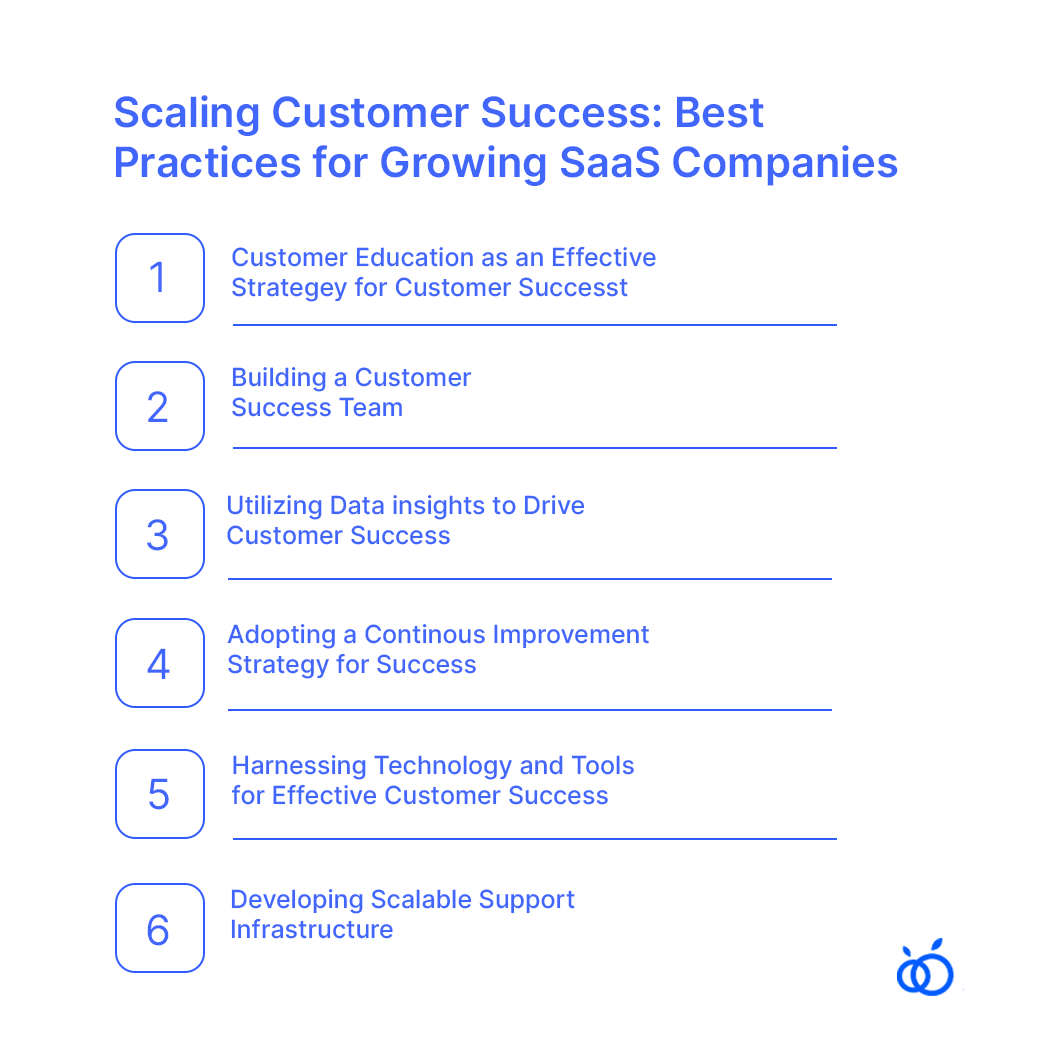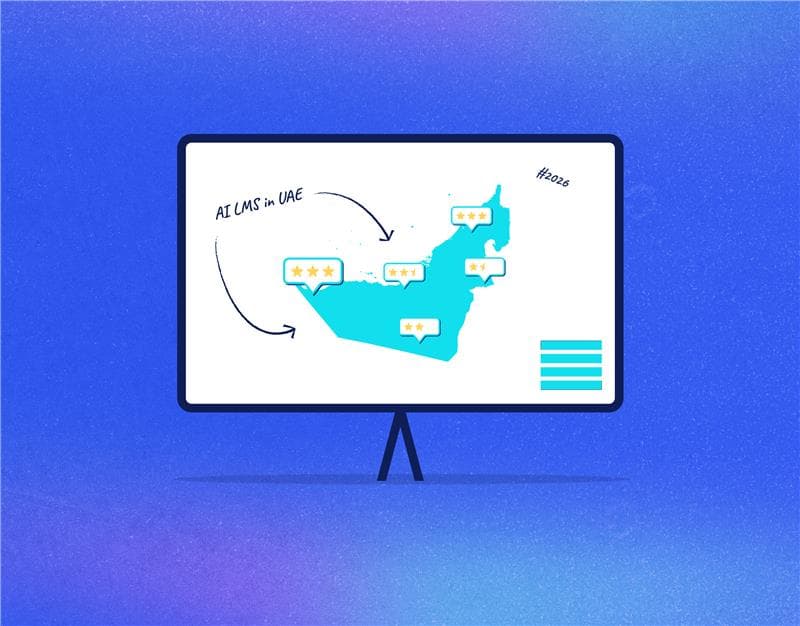Published February 6, 2025
Scaling Customer Success: Best Practices for Growing SaaS Companies
In today's competitive business landscape, customer success goes beyond just meeting expectations; it's about building strong, long-term partnerships that foster trust, loyalty, and mutual growth. This approach is particularly crucial in the Software-as-a-Service (SaaS) industry, where subscription-based models make customer retention and satisfaction pivotal for sustaining revenue and ensuring growth.
Customer success isn't just a reactive support function; it's a proactive partnership that helps customers achieve their goals, turning a simple transaction into a meaningful relationship. By stepping into the customer's shoes, understanding their needs, and actively working toward their success, businesses create lasting value that keeps customers engaged.
The SaaS model brings seamless updates and easy onboarding, but it also makes switching providers easier than ever, leading to customer churn driven by product issues, poor experiences, or unmet expectations. When executed well, customer success becomes the driving force behind a company's growth, transforming each interaction into an opportunity for long-term loyalty and satisfaction.
Benefits of Customer Success
In their book "Customer Success: How innovative companies are reducing churn and growing recurring revenue", Nick Mehta and others outlines three basic benefits of customer success.
- Reduce/manage churn: Customer success helps reduce churn by identifying early signs of dissatisfaction and proactively addressing issues. This approach ensures that customers continue to find value in the product and remain engaged.
- Drive increased contract value for existing customers: Customer success teams identify upsell and cross-sell opportunities by understanding customers' evolving needs. This results in increased contract value and long-term growth from existing customers.
- Improve customer experience and customer satisfaction: Customer success ensures a seamless, value-driven experience by offering proactive support and personalized guidance. This leads to higher customer satisfaction, loyalty, and positive brand reputation.
Scaling customer success: Best practices in SaaS

1. Building a Customer Success Team
A dedicated Customer Success team is crucial to fostering long-term relationships and ensuring customer satisfaction. Separating customer service from customer success enables a shift from reactive problem-solving to proactive engagement. This distinction allows Customer Success Managers (CSMs) to focus on more strategic aspects of the customer journey, ensuring that customers receive ongoing value throughout their lifecycle.
- Developing Strategic Customer Relationships: CSMs focus on building strong, personalized relationships with customers by understanding their goals and challenges. This helps ensure long-term engagement and loyalty as CSMs guide customers toward achieving their objectives with the product.
- Hire Specialized Customer Success Professionals: Recruiting experienced professionals with expertise in customer success ensures that the team can effectively address customer needs. Specialists can drive higher customer satisfaction and retention by applying their knowledge to improve engagement.
- Proactively Identifying Potential Issues: By monitoring usage patterns and customer health scores, CSMs can spot early signs of dissatisfaction or problems. Proactive intervention helps address these issues before they escalate, reducing the risk of churn.
- Creating Personalized Success Plans: CSMs collaborate with customers to set clear, measurable goals that align with their business objectives. These customized plans ensure customers are on track to get the most value from the product.
- Advocating for Customer Needs: CSMs act as the voice of the customer within the company, ensuring their feedback and concerns are communicated to relevant teams. This advocacy drives product improvements and ensures alignment with customer expectations.
2. Utilizing Data Insights to Drive Customer Success
Implementing data-driven strategies allows companies to proactively address customer challenges by anticipating issues before they arise. Using advanced analytics helps optimize customer success efforts, ensuring both early intervention and sustained engagement.
- Track Usage Pattern Analysis: By closely monitoring how customers interact with the product, companies can identify usage trends and potential issues. This data provides valuable insights into customer satisfaction, helping CSMs intervene when patterns suggest dissatisfaction or low engagement.
- Develop Customer Health Scoring Systems: Health scoring systems track customer behavior across various metrics such as usage, support tickets, and engagement. These scores offer a quick snapshot of customer satisfaction and risk, enabling CSMs to prioritize accounts that may need attention.
- Create Automated Trigger Systems for At-Risk Accounts: Automated triggers can be set up to flag accounts that show signs of distress, such as low activity or decreased usage. These systems automatically notify CSMs to step in with personalized support, reducing churn risk.
- Use Behavioral Data Integration to Anticipate Customer Needs: By integrating data from multiple sources, like website activity or product usage, companies can predict customer needs more accurately. This allows CSMs to offer proactive solutions, resources, or training before customers even ask for help.
Integrating LMS analytics into customer success efforts provides valuable insights into learning behaviors, module completion rates, and engagement patterns. These insights help identify areas where customers might need additional support, enabling teams to intervene effectively.
3. Customer Education as an Effective Strategy for Customer Success
Customer education plays a pivotal role in enabling customers to achieve their goals and derive maximum value from a product or service. By providing comprehensive guidance and accessible resources, businesses can bridge the gap between product features and customer objectives. This proactive approach not only empowers customers to use the product effectively but also fosters long-term satisfaction, loyalty, and trust.
- Develop Clear and Accessible Resources: Create user-friendly tutorials, guides, and knowledge bases that address customer needs at various skill levels, ensuring customers can easily find solutions and learn independently.
- Offer Ongoing Learning Opportunities: Regularly update educational materials to reflect product enhancements and evolving customer needs. This ensures customers continue to find value throughout their journey.
- Leverage LMS for comprehensive Customer Education: A Learning Management System (LMS) is an effective tool for delivering structured and engaging customer education programs. It enables businesses to centralize and scale their educational efforts, catering to diverse customer needs and learning preferences. LMS platforms enable businesses to design interactive learning modules, such as quizzes and videos, that boost customer engagement while also offering tools to track progress and identify learning gaps. By delivering customized, goal-aligned training and fostering a consistent learning experience, an LMS helps customers derive long-term value from the product, driving sustained success.
4. Developing Scalable Support Infrastructure
As customer bases grow, a scalable support infrastructure ensures that customer success teams can maintain high service levels without becoming overwhelmed. This infrastructure empowers customers to find answers independently, while automating processes helps manage a larger volume of inquiries efficiently.
- Develop a Comprehensive Resource Center: A well-organized resource center provides customers with easy access to helpful materials like FAQs, blog posts, webinars, and self-service documentation. This enables customers to resolve common issues themselves, reducing the demand on support teams and improving overall customer satisfaction. A comprehensive resource center powered by an LMS ensures that customers can access training materials, tutorials, and certifications at their convenience. This not only reduces the demand on support teams but also empowers customers to become proficient users of the product independently.
- Implement Tiered Support Models: By offering different levels of support based on customer needs, companies can allocate resources more efficiently. High-value or enterprise customers may receive dedicated support, while smaller customers benefit from automated or community-driven resources.
- Automate Repeatable Processes: Automating recurring tasks like account setup, onboarding, or ticket triage can save time and maintain consistency. Automation tools like chatbots or email workflows ensure that common inquiries are addressed promptly, allowing the support team to focus on more complex issues.
5. Harnessing Technology and Tools for Effective Customer Success
Investing in a robust tech stack ensures that customer success operations are efficient and scalable. The right tools provide CSMs with the necessary insights to deliver personalized and timely support.
- 360-Degree Customer Visibility: Leverage tools that provide a comprehensive view of customer interactions to enable CSMs to offer contextually relevant support. This holistic approach to data enhances customer engagement and satisfaction. While traditional LMS platforms focus on learning, many modern systems offer analytics and dashboards that provide insights into user behavior and engagement with educational content. Integrated with CRM tools, an LMS can contribute to a comprehensive view of customer interactions.
- Automated Messaging: Automated messaging platforms like Intercom trigger personalized communication based on user behavior. This ensures timely follow-ups and improves the customer experience with minimal manual effort.
- Journey Milestone Tracking: Tools that track key moments in the customer journey help monitor progress and identify milestones. This enables Customer Success Managers (CSMs) to intervene proactively, enhancing customer satisfaction.
- Segmentation Capabilities: Segmentation tools categorize customers based on behaviors or demographics, enabling tailored engagement strategies. This approach ensures that customers receive support and resources suited to their specific needs. Many LMS platforms allow segmentation of learners based on progress, performance, or demographics, enabling tailored content delivery and engagement strategies.
6. Adopting a Continuous Improvement Strategy for Success
A continuous improvement strategy is essential to ensuring the ongoing success and satisfaction of customers. Regular assessments allow businesses to refine their approach and stay aligned with customer needs.
- Regularly Monitor Key Performance Indicators (KPIs): Monitoring KPIs such as customer retention rates and customer lifetime value helps gauge the success of customer success efforts. This enables teams to identify areas for improvement and adjust strategies accordingly.
- Use Net Promoter Score (NPS) to Assess Interaction Quality: NPS surveys measure customer satisfaction and loyalty, offering valuable insights into how customers perceive their interactions. This helps businesses pinpoint strengths and areas for improvement in their customer relationships.
- Create Segment-Specific Success Playbooks: Tailoring success strategies to different customer segments ensures relevant engagement. For example, enterprise customers may require dedicated support, while smaller businesses benefit from automated resources.
- Anticipate and Understand Customer Demand: Analyzing customer feedback and usage data helps anticipate future needs and adjust offerings. This proactive approach allows businesses to stay ahead of customer expectations and offer timely solutions.
Conclusion
As the SaaS industry continues to evolve, customer success will become an even more integral driver of long-term growth. By leveraging data, technology, and a customer-first approach, businesses can turn challenges into opportunities for deeper customer relationships and enhanced loyalty. The future of SaaS hinges on creating exceptional experiences that keep customers engaged, satisfied, and eager to grow alongside your brand.



